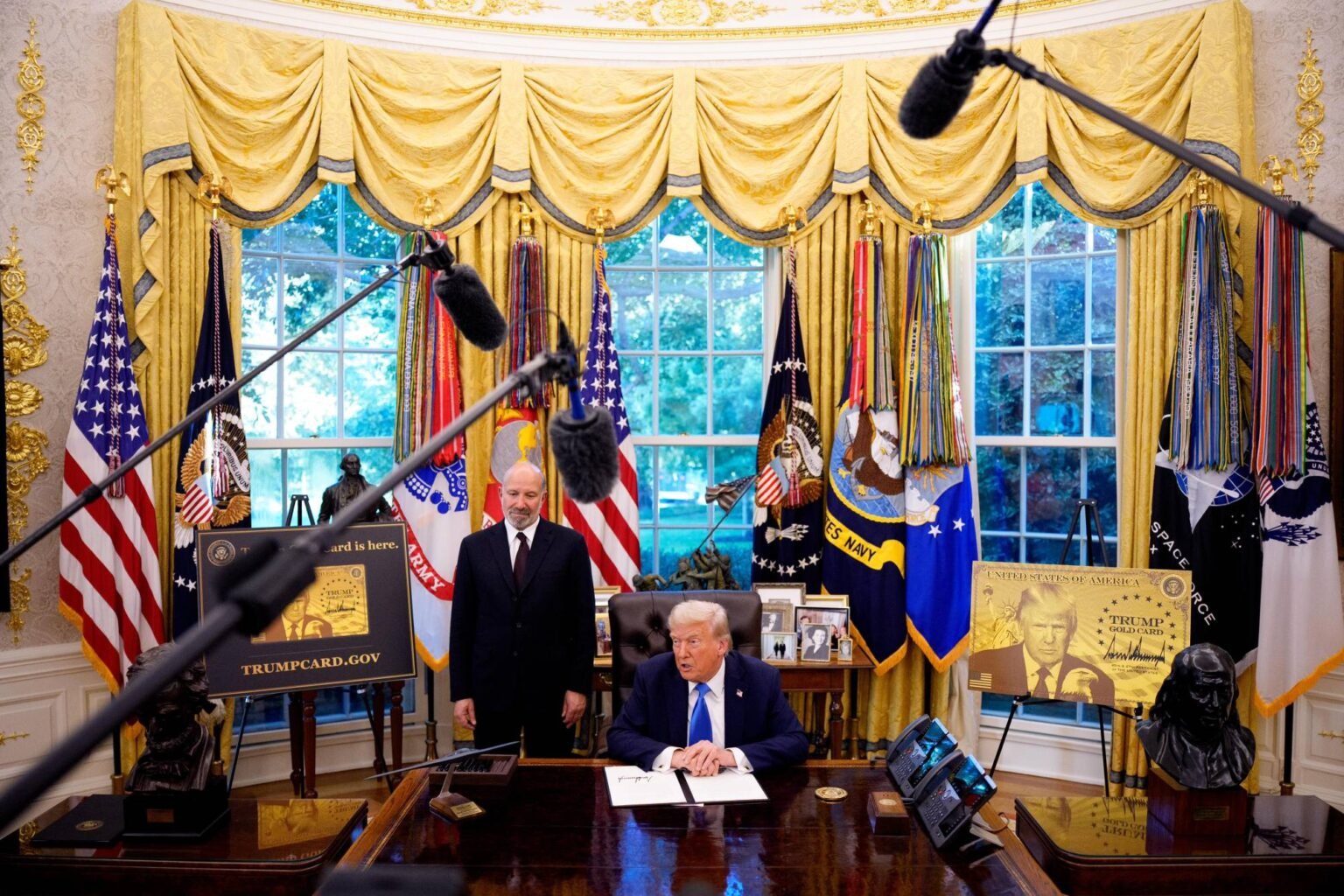Now things are about to get even more difficult — for the district and for teachers like Tomimbang.
Last month, President Trump revealed a plan that requires employers pay a fee of $100,000 for new H-1B visas. In his message, Trump specifically called for high paying tech jobs which he says are occupied by too many foreign workers.
However, the impact on schools and educators will be significant. According to Department of Homeland Security datamore than 20,000 educators are in the country on H-1B visas, the third most common occupational group for the program.
“I don’t have a teacher in my district making $100,000 a year,” says Novasio. For school districts, “paying this fee on top of salary is just going to kill H-1B for education.”
Change is a blow to the long-term strategy of some areas to keep teachers in classrooms.
Many of Hardin’s current teachers are on cultural exchange or J1 visas; they must return to their home countries every few years and stay for at least one year.
When that happens, Novasio struggles to fill those classrooms. His goal was to transfer many of his current teachers to H-1B visas so they could stay for three to six years, with options for extensions. Now this option is financially unviable.
To further add to the turmoil and uncertainty, the White House earlier this year temporarily suspended interviews for J1 visa applicants for about a monthbefore restoring the program. The break has made recruiting for this year’s passes even more stressful.
Despite the challenges, would Tomimbang recommend others come to the U.S. to teach amid the changing immigration landscape? Yes, she says.
“Worth the wait, worth the time and effort.”
“Unintended Consequence”
Asked about the impact of the H-1B proposal on teachers, Taylor Rogers, a White House spokesman, told NPR that “President Trump promised to put American workers first, and this common-sense action does just that by discouraging companies from spamming the system and undercutting American wages.”
Novasio isn’t sure that applies to teaching, especially at Hardin. International teachers in his district, he said, earn the same as their local counterparts. Salaries are dictated by the teachers union.
The White House, in a statement, also directed NPR to the text of the president’s proclamation — which would allow the Department of Homeland Security to grant exemptions from the fee. It is unclear whether such an exemption could be granted to schools and school districts. When asked for comment, a DHS spokesperson referred the matter to the White House.
Sasha Pudelski, director of advocacy for AASA, an organization representing school leaders that is working to navigate the new rule in Washington, said she feels encouraged by that part of the text.
“We believe this is an unintended consequence,” she says. “And we’re doing everything we can to make sure that the Department of Homeland Security releases the educators.”
However, in tandem with the proclamation, the administration released a proposal to change the H-1B visa from a lottery system to a weighted scale that prioritizes the highest earners. The average teacher salary in the state of Montana in 2023 it is $58,600far below what many tech workers earn.
This proposal, Pudelski believes, could be the most harmful for schools and teachers.
“As you can imagine, education is not a particularly lucrative profession,” she says. “So we are very concerned that this could present a more significant long-term barrier to the use of these teacher visas.”
Meanwhile, Novasio is already looking for new teachers for next year – abroad and at home. He worked with state officials to create an apprenticeship program for teachers and develop a stronger local pipeline.
His district already has partnerships with local colleges. “We cannot fill these positions for lack of trying.”
He hopes people will “have a little sympathy for those people who pack up and come to our country to help educate our children.”

